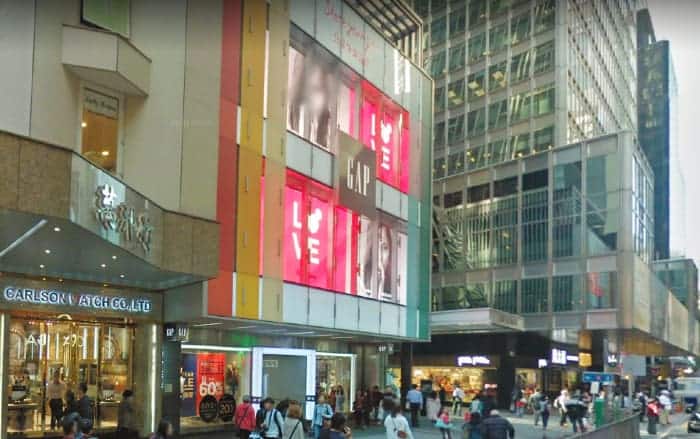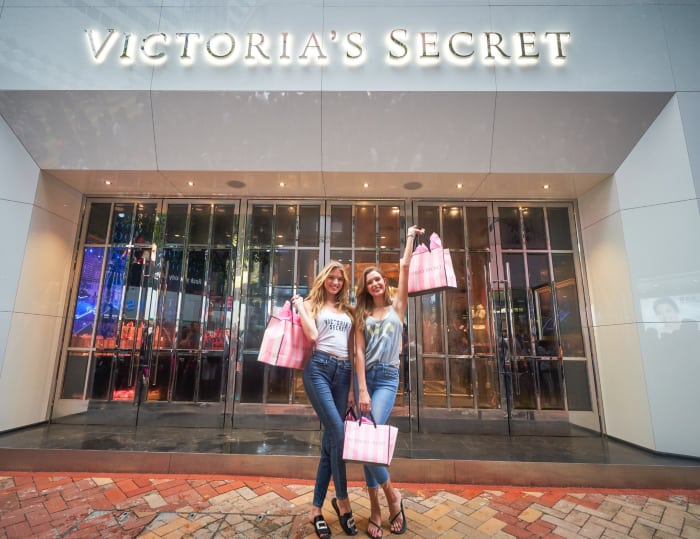
Gap is closing down its location in Queen’s Road Central as it joins a Hong Kong retail exodus
US fast fashion retailer Gap is closing its doors in Hong Kong as it follows through on plans to shut its remaining stores in the world’s most expensive retail market by the end of November, according to Apple Daily.
The brand this month will be vacating the flagship Queen’s Road Central premises it has occupied since 2011. The four-storey, 13,000 square foot (1,208 square metre) prime retail space is now available for lease at HK$3.3 million ($426,000) per month, a rate representing a 40 percent discount from the HK$$5.5 million that Gap had been paying.
The maker of crisp khakis and casual denim had shuttered five of its eight Hong Kong branches over the summer, including shops in Sha Tin and Causeway Bay, but had indicated at the time that it would keep its Central location, along with two other stores, open for business.
In an August earnings call reported by CNN, the San Francisco-based retailer cited losses stemming from the ongoing coronavirus pandemic as the primary reason for store closures worldwide and said sales had slipped 18 percent in the second quarter.
The company, which also owns mid-market brand Old Navy and higher-end Banana Republic, plans on closing over 225 outlets globally, continuing a physical retail retreat that began in 2018, CNN said.
The latest departure of a major international brand in one of the SAR’s key retail districts could be a sign that the sector is headed for a reset.

Victoria’s Secret was among the other international brands closing down in Hong Kong this year.
“As the rental levels of core retail districts return to 2003-2004 levels, which was before the implementation of the Individual Visit Scheme, local-oriented businesses are re-emerging in core districts,” said Lawrence Wan, CBRE’s head of retail leasing in Hong Kong. Launched in Guangdong, the IVS lets tourists from nearly 50 mainland cities visit outside of organised tour groups.
“We are set to see more stores focusing on customer experience and daily necessities,” Wan said.
Exodus Leaves Empty Storefronts
Gap is among a growing number of global fashion brands that are rethinking Hong Kong as retailers struggle to adjust to e-commerce realities and Hong Kong’s combination of high costs and a slowing economy add to the city’s challenges. Clothing sales in Asia’s priciest city have declined for 19 straight months now, including a 15 percent drop from August to September. For the year to date, clothing sales are down nearly 52 percent, according to Hong Kong’s Census and Statistics Department.
Before Gap made its move to leave Hong Kong’s streets, lingerie brand Victoria’s Secret and British label Topshop had also reportedly been making exit plans, though those brands were struggling before both COVID-19 and the 2019 protests.
Victoria’s Secret abruptly closed its five-storey, 50,000 square foot flagship in June after two years in Causeway Bay, mirroring intentions to shut 250 stores in North America. It declared bankruptcy in the UK in May 2020.
Similarly, Topshop will be closing the 14,000 square foot store it opened on Queen’s Road in Central in 2012. The UK fast fashion brand moved out of Japan’s brick-and-mortar sector for good in 2015 and filed for voluntary administration, similar to bankruptcy protection, in Australia in 2017, the Australian Financial Review reported. The company closed its last Singapore store this year.
Rents and Values Tumbling
With retailers’ sales slowing and shops shutting down, Hong Kong’s prime retail hubs in Central, Causeway Bay and Tsim Sha Shui have been hit by rising vacancy rates.
Vacancy was at an unprecedented 16.9 percent in Central, 13.2 percent in Causeway Bay and 16.7 percent in Tsim Sha Tsui in the third quarter, according to data from Cushman & Wakefield, with rents falling between 5.3 and 7.8 percent from the second quarter. At their 2012 peak, rents on Queen’s Road could run as high as HK$2,400 per square foot per month, said Apple Daily.
Despite a grim economic outlook, there was a slight uptick in trades of Hong Kong shops during the third quarter, particularly in outlying retail districts, as more shop owners accepted the reality of selling at a discount.
The third quarter saw a clutch of retail shop transactions in the HK$20 million to HK$50 million range. Among them were a 547 square foot shop in Jordan that sold for HK$14.4 million and a 326 square foot shop in suburban Tin Shui Wai that went for HK$6.88 million.
A second-storey shop in Tsim Sha Tsui’s Capital Plaza mall made history when it sold for HK$245,000. That sum was 93.5 percent less than the HK$3.54 million that the seller had paid to acquire the 120 square foot shop in 2013, according to an account in HK01.com
Reinventing Retail
Hong Kong’s shopping districts could be poised for a major reinvention in the coming months and years, as landlords pivot away from reliance on an unsustainable tourist market.
“We won’t be able to resume the good old days any time soon,” Simon Lee of the Chinese University of Hong Kong told the SCMP. A full tourism recovery could take up to four years, he said, so retailers will be refocusing on affordable international brands that appeal to local consumers.
With sales of food and other commodities continuing to grow this year, even as luxury goods go unloved, discount retailers are now becoming part of the tenant mix in prime districts.
In July, Japanese discount chain Don Don Donki was able to get a 40 percent markdown on a 19,000 square foot space at 100 QRC, across the street from Topshop in Central, and it plans to double its Hong Kong exposure in 2021.
Japanese supermarket Yata seeks to expand in Hong Kong next year, according to the SCMP. Also taking up more space will be Tesco distributor U Select and Marks & Spencer food outlets.
Leave a Reply